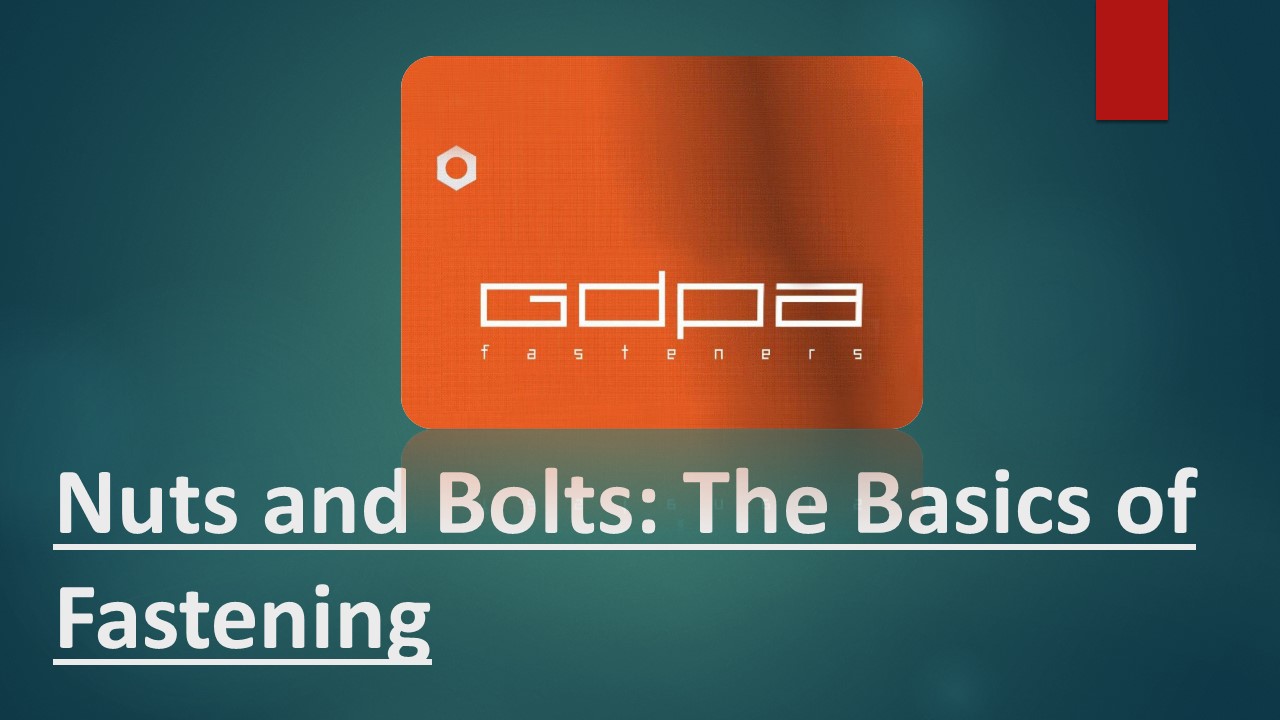Nuts and Bolts: The Basics of Fastening - PowerPoint PPT Presentation
Title:
Nuts and Bolts: The Basics of Fastening
Description:
No matter what you're building, at some point you're going to need to put some nuts and bolts together. Here are the basics of fastening so you can get started on your next project. – PowerPoint PPT presentation
Number of Views:11
Title: Nuts and Bolts: The Basics of Fastening
1
Nuts and Bolts The Basics of Fastening
2
Make sure your bolts and nuts are used correctly
to make the most of them! Nuts and Bolts come in
many shapes, sizes, and types, but they all have
one thing in common theyre designed to fasten
two objects together securely and dependably.
Nuts and Bolts The Basics of Fastening
3
Most screws and bolts have threads that are
right-handed, which means they screw into a hole
in the same direction that you would turn a
doorknob. This type of thread is called an
External Right-Hand (ERH) thread. To determine
whether a thread is ERH or not, hold it up to the
light so you can see the spiral. If the spiral
appears to wind up the shaft towards the right,
it is ERH.
Screw Threads
4
There are three types of pipe threads taper,
parallel, and dead-fit. Taper threads are tapered
at an angle, so that they become tighter as they
are turned. Parallel threads are cut straight
across, so that they stay the same width as they
are turned. Dead-fit threads have no taper or
parallelism, so they fit snugly together without
turning.
Pipe Threads
5
There are two types of bolt threads, those with a
tapped hole and those without. A tap is a tool
used to cut the internal threads of a hole. To
insert a bolt with a tapped hole, you must first
thread the tap into the hole. This will create
the threads necessary to screw in the bolt. To
insert a bolt without a tapped hole, you must
first drill a pilot hole. This will create the
necessary space for the bolt to be inserted. Once
the pilot hole is drilled, you can simply screw
in the bolt.
Bolt Threads
6
Threaded fasteners are among the most common
kinds of hardware used in a wide variety of
applications. A threaded fastener's basic
function is to hold two or more pieces of
material together. Threaded fasteners are
available in a vast array of sizes, materials,
finishes, and patterns. Most importantly, they
come in two different varieties machine screws
and bolts.
Non-Threaded Fasteners
7
Threaded fasteners are one of the most commonly
used means of joining materials together. They
are easy to use and can be very strong, making
them ideal for a wide range of applications.
There are many different types of threaded
fasteners, each with its own strengths and
weaknesses. In this post, we'll take a look at
some of the most common types of threaded
fasteners so that you can choose the right one
for your next project.
Miscellaneous Threaded Fasteners
8
Call us 91 181 2642001-04
Contact us
Website https//www.gdpafasteners.com/
Email us exports_at_gdpaindia.com
Address GDPA House, Near Railway Godowns,
Jalandhar 144004 Punjab, India































